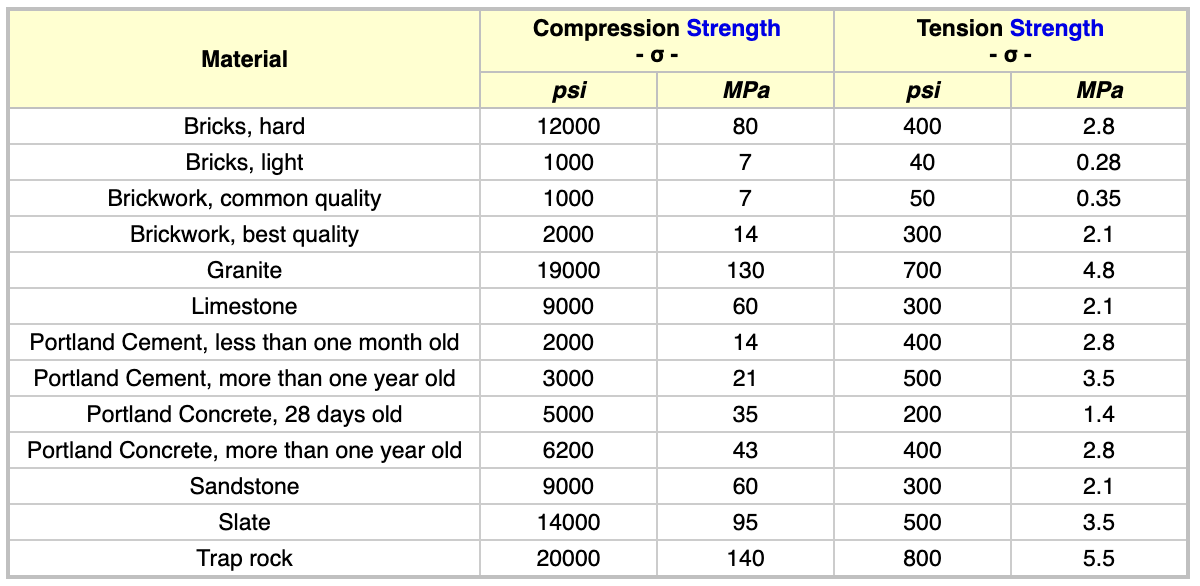What is Compressive Strength and Why Does It Matter?

Why Compressive Strength Matters
Look at a bridge column or the foundations of a high-rise and you might wonder: how do engineers know it won’t collapse under the weight?
The answer isn’t magic, it’s about understanding how forces act on materials. One of the most important of these forces is compression. Knowing the compressive strength of a material lets engineers design structures that can withstand enormous pressure safely and reliably.
What Is Compressive Strength?
Compressive strength is the ability of a material to resist being squashed. It’s measured as the maximum pressure a material can withstand before cracking, breaking, or deforming.
- Stone, brick, concrete, and steel all have different compressive strengths.
- If a material is pushed beyond its limit, it fails at a molecular level.
Whether you’re working on a tunnel, a bridge, or a residential home, understanding compressive strength helps you select the right material for the right job — and avoid costly or dangerous failures (history is full of examples of structures built on the wrong assumptions).
Why Engineers Rely on It
Over time, structures face different loads that try to push them down or against resistant surfaces. These include:
- Dead loads – the weight of the structure itself (concrete, steel, timber, pipes).
- Live loads – people, vehicles, furniture, and anything that moves through the structure.
- Environmental loads – wind, rain, snow, earthquakes, and other natural forces.
Each of these creates compressive forces that test materials in different ways. That’s why knowing compressive strength is essential to engineering design. If you’d like to learn more about each of these subcategories, check out this blog by constrofacilitaor.com.
How It’s Measured
Testing compressive strength is simple in principle:
- A cube, prism, or cylinder of material is placed in a testing machine.
- Increasing pressure is applied until the sample cracks or breaks.
- The compressive strength is calculated:
F = P / A
- F = Compressive strength
- P = Maximum load before failure
- A = Cross-sectional area resisting the load
Results are usually given in PSI (pounds per square inch) or MPa (megapascals).
Characteristic Compressive Strength
In practice, not every sample performs identically. That’s where characteristic compressive strength comes in — it’s the grade given to a material where 95% of tested samples reach or exceed a certain strength.
Example: if 95 out of 100 concrete samples withstand 5,000 PSI before failure, the characteristic compressive strength is 5,000 PSI.
Other Forces to Consider
Compression isn’t the only force engineers need to account for. Materials can also fail under:
- Tension – being pulled apart.
- Torsion – twisting.
- Shear – sliding in opposite directions.
- Bending – stretching and squashing at the same time.
That’s why compressive strength is only one part of the bigger structural pict
Strengths of Common Materials
Different materials perform differently:
- Steel has equal strength in compression and tension.
- Concrete is strong in compression but weak in tension, which is why it’s often reinforced with rebar.
- Timber, stone, and brick vary widely depending on grade and quality.

Real-World Impact: Why Concrete Matters Most
Among all materials, concrete’s compressive strength is tested most frequently in construction. There are two key reasons:
- It’s one-sided – Concrete is strong in compression but weak in tension, unlike steel. That’s why reinforcing bars are essential in structural concrete.
- It varies with curing – The method and conditions of curing dramatically change concrete’s strength. With proper moisture curing, concrete not only gains strength faster but also reaches a higher final strength compared to being left in open air.
For infrastructure projects like tunnels, high-rises, and bridges, failing to test and monitor compressive strength isn’t just an oversight — it’s a risk to safety, budgets, and timelines.
Conclusion
Every material has a limit to how much compression it can withstand before failure. By understanding compressive strength — and how it interacts with other forces — engineers can design structures that are safe, durable, and efficient.
When planning your next project, remember: the right material, with the right compressive strength, is the foundation of a structure that stands the test of time.



